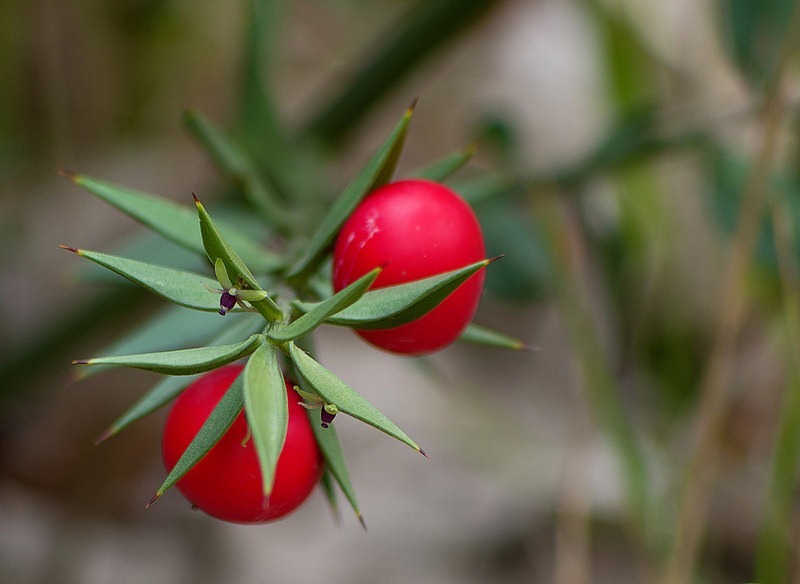Butcher’s Broom, or Ruscus aculeatus, is a low-growing perennial shrub with tough, erect, stems and very rigid leaves that terminate in a sharp spine. From the center of the leaves grow small greenish-white flowers that blossom in early spring and develop into red berries in autumn. The tiny red berries are attached directly to the leaves by a short stem, making it a very strange looking plant.
The Butcher’s broom, however, is not breaking any rules of the plant kingdom, because what appears to be leaves are actually modified stems called cladodes, that have been flattened to not only look like leaves but serve their function as well.
Photo credit: Gil Costa/Flickr
Butcher’s broom is widely distributed, from Iran to the Mediterranean and the southern United States. They have been used for more than 2,000 years as laxative and diuretic and to treat various ailments such as hemorrhoids, varicose veins, itching, and swelling. The young shoots of the plant are also eaten like those of asparagus. The stiff twigs were once bundled together and used by butchers to keep their cutting boards clean, from which came its common English name: butcher’s broom. It is also known by others names such as “Knee Holly”, because of its knee height, “Jew's Myrtle”, for its use during the Feast of Tabernacles, “Sweet Broom” and “Pettigree”, although its meaning is not clear.
Extracts of butcher’s broom have been used throughout the ages, but the medicinal use of this plant did not become common until the last century. Investigation in the 1950s indicated that butcher's broom could induce constriction of veins, because of which it is still widely used for treating certain circulatory diseases. It also contains an alkaloid which inhibits the passing of sodium ions across the cell membrane and thus is an effective anti-arrhythmic substance.
Butcher’s broom is also widely planted in gardens and its berries used as decorations.
Also see: Jabuticaba: The Tree That Bear Fruits on its Trunk
Photo credit: www.herbco.com
Photo credit: stories.rbge.org.uk
Photo credit: herbier.sesa-aude.fr
Photo credit: Franz Xaver/Wikimedia
Photo credit: Hans Hillewaert/Flickr

Photo credit: Katya/Flickr
Sources: Drugs.com / Botanical.com / Plant World Seeds via mantisshrimp.wordpress.com


















Comments
Post a Comment